BIOPATINA KIT
Biopatina Kit is an instrument fostering a deeper understanding of microorganisms in the environment
Biopatina Kit is an instrument fostering a deeper understanding of microorganisms in the environment

The Biopatina Kit is one of the tangible outputs of ongoing research on the notion of microbiological layers residing on outer architectural surfaces reffered to as Epidermitecture. Due to their lasting presence
in the environment, materials become lively habitats managed by proactive agents such as fungi, microalgae, lichens, or cyanobacteria, collectively referred to as biopatina. As a result, surfaces undergo changes in texture and visual discoloration, which are usually perceived as unruly, impure, and inappropriate
for public display or discussion.
“Nowadays, almost all architectural outer surfaces are conditioned to appear clean and new, thus endlessly purified in an obvious act of human disregard towards non-human life.”

The Biopatina Kit is an instrument fostering a deeper understanding of these thin layers and their regenerative role in the environment. It aims to detach its users from the anthropocentric worldview and provide an experience of non-human presence.
By enabling the observation and identification of microorganisms on facades through temporary tattoos and a color gradient, this designed tool strives o reinforce public awareness and foster the proliferation of microorganisms, exploring their growth for new cultural, visual, and sensual potentialities.

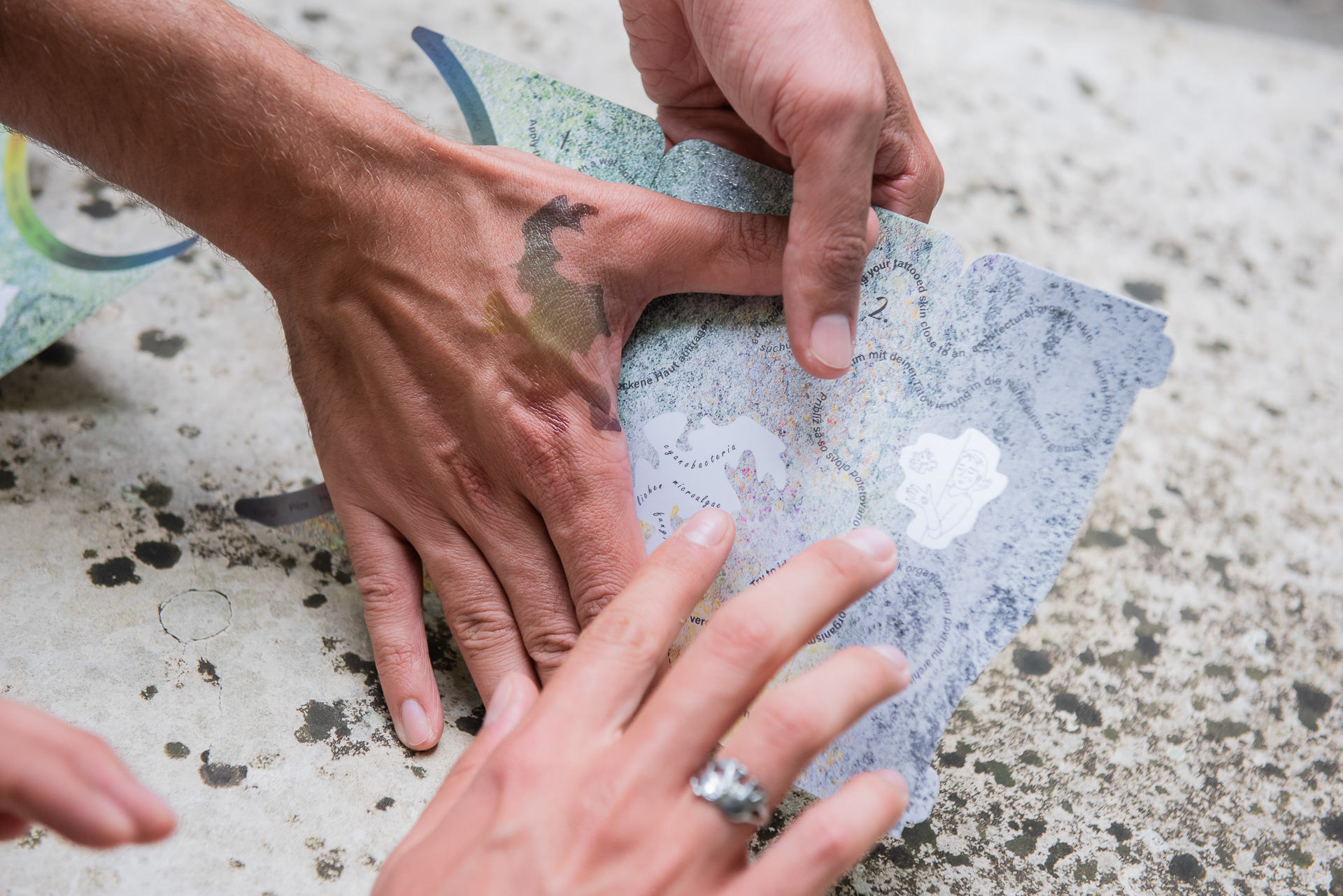
By organising public learning workshop with Biopatina Kit, the public could experience a new mode
of engaging with their senses in the real world. Particularly appealing to the younger generation, the Kit key component is a temporary tattoo with a colourful, playful design, arousing artistic interest and promoting awareness. Rather than
a literal representation of Biopatina, it symbolizes vibrant, underappreciated life, promising a more inclusive future, beyond surface conventions, embracing the
wild, living and transforming.

Through artistic research techniques, it questions our current worldview and
explore collective world-making practices. By reimagining the perception of
surfaces, it aims to create spaces that bridge the gap between humans and
nonhumans. The regenerative role of the project is showcasing the overlooked
bodies forming undesired surface stains, cracks, and growths and revealing their
vibrant benefits in reducing CO2 and toxins in the air we breathe. The Kit allows
for recogniction and the symbolic act of bonding with the Biopatina, through the
process in which human bodies become surfaces, fostering tangible awareness of the presence of the other.
“In this way we may rediscover our intrinsic connection with the nonhuman, shaping our world from within and beyond. “
Through bodily and tactile experiences, the Kit could engage a larger range of users, connecting them to living microorganisms. This connection would amplify hidden voices, promoting
coexistence between nonhumans, architecture, and the environment.
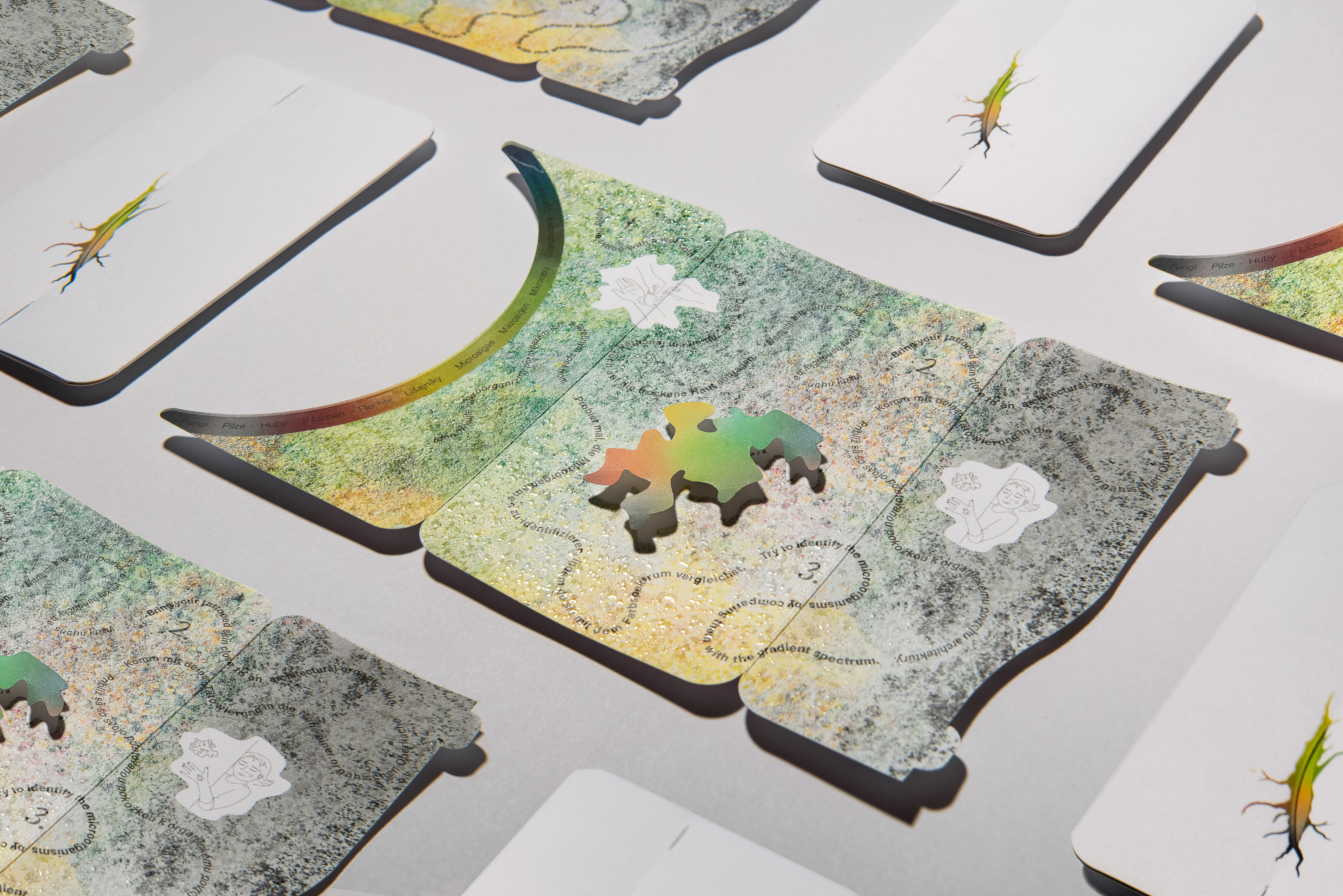
The main element of the Kit is the temporary tattoo, which has been designed to be colourful, playful, stimulating, and visually interesting. Its purpose is not to accurately represent Biopatina, but rather to symbolize the various forms of overlooked life through graphically reinterpreted shape and a gradient spectrum comprising different microbial species.
“There is something grounding and mindful in observing how it behaves over time, how it changes and dissolves into the skin, experiencing the process as a reminder to remain observant and sensitive, aware of the omnipresence of microorganisms, our co-dependence, and the unstoppable process of change, growth, ageing, decay, and transformation into new living matter.”
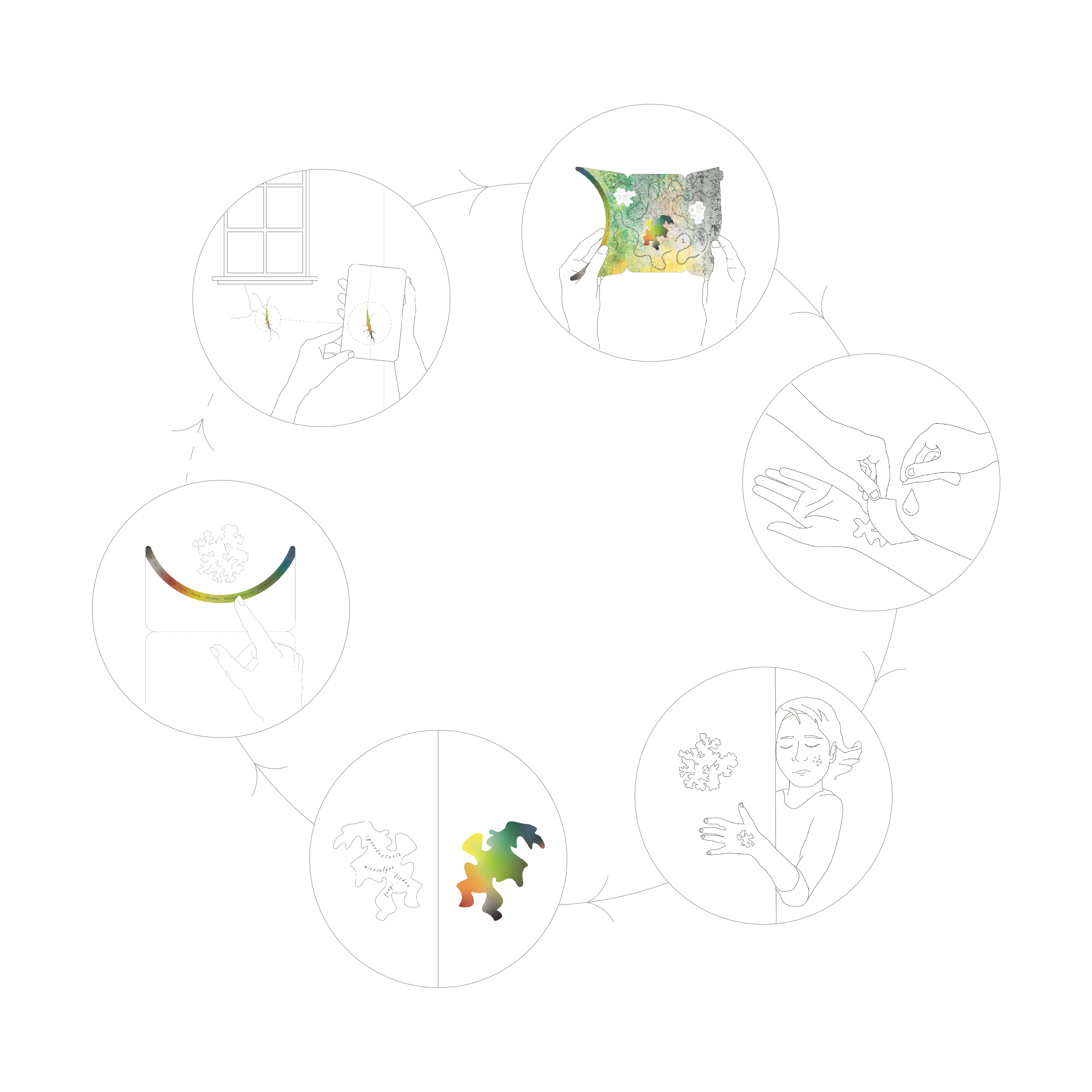

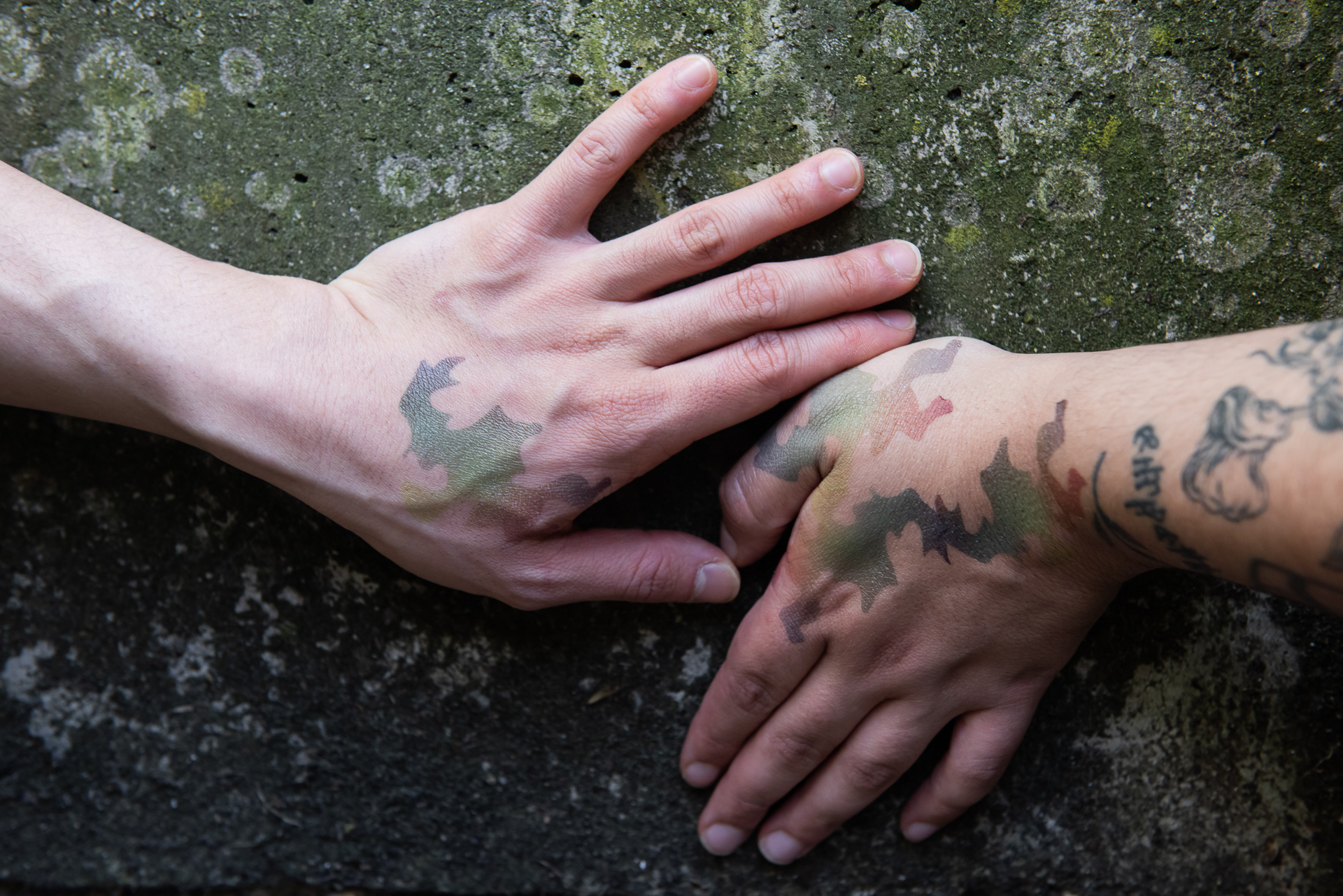
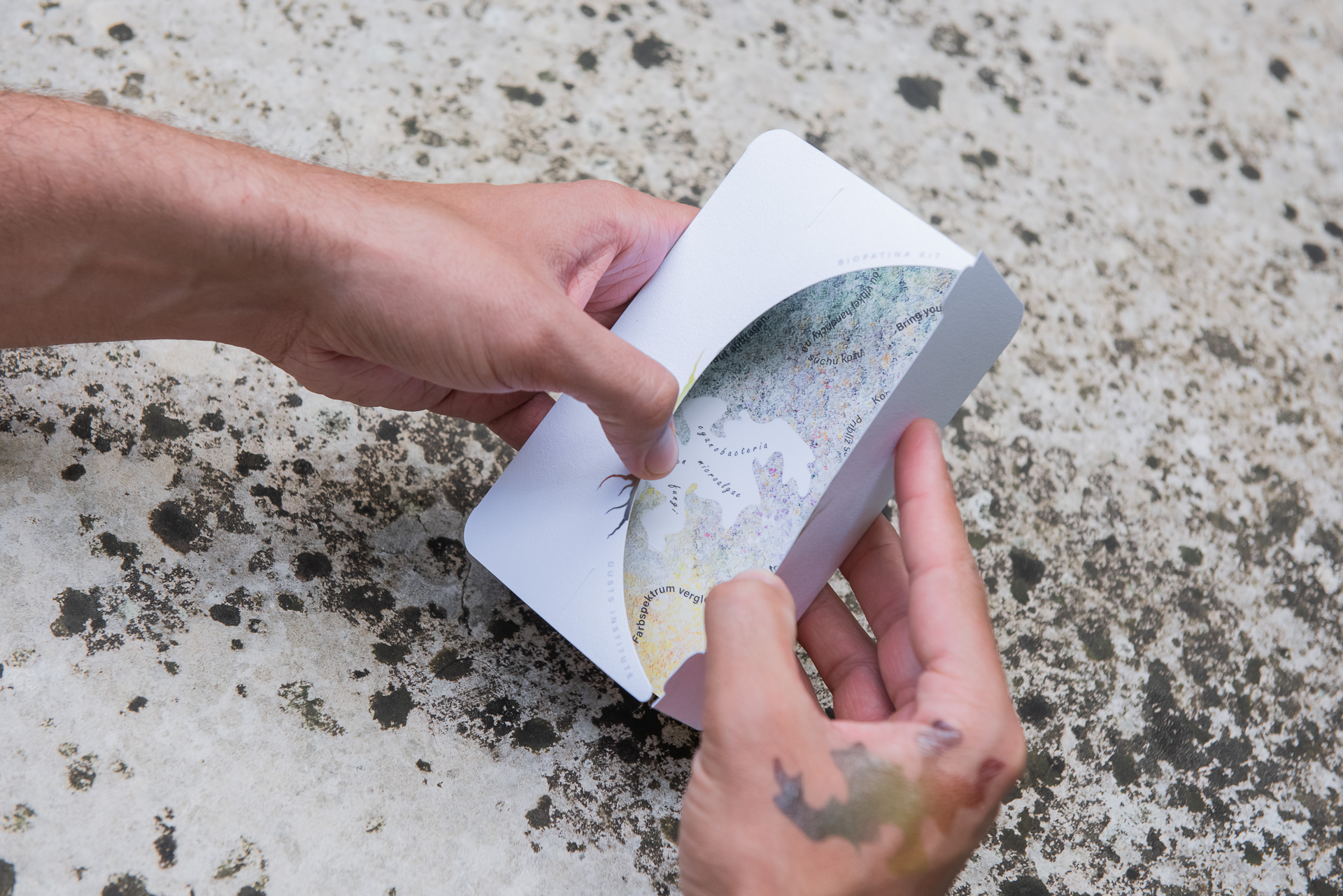
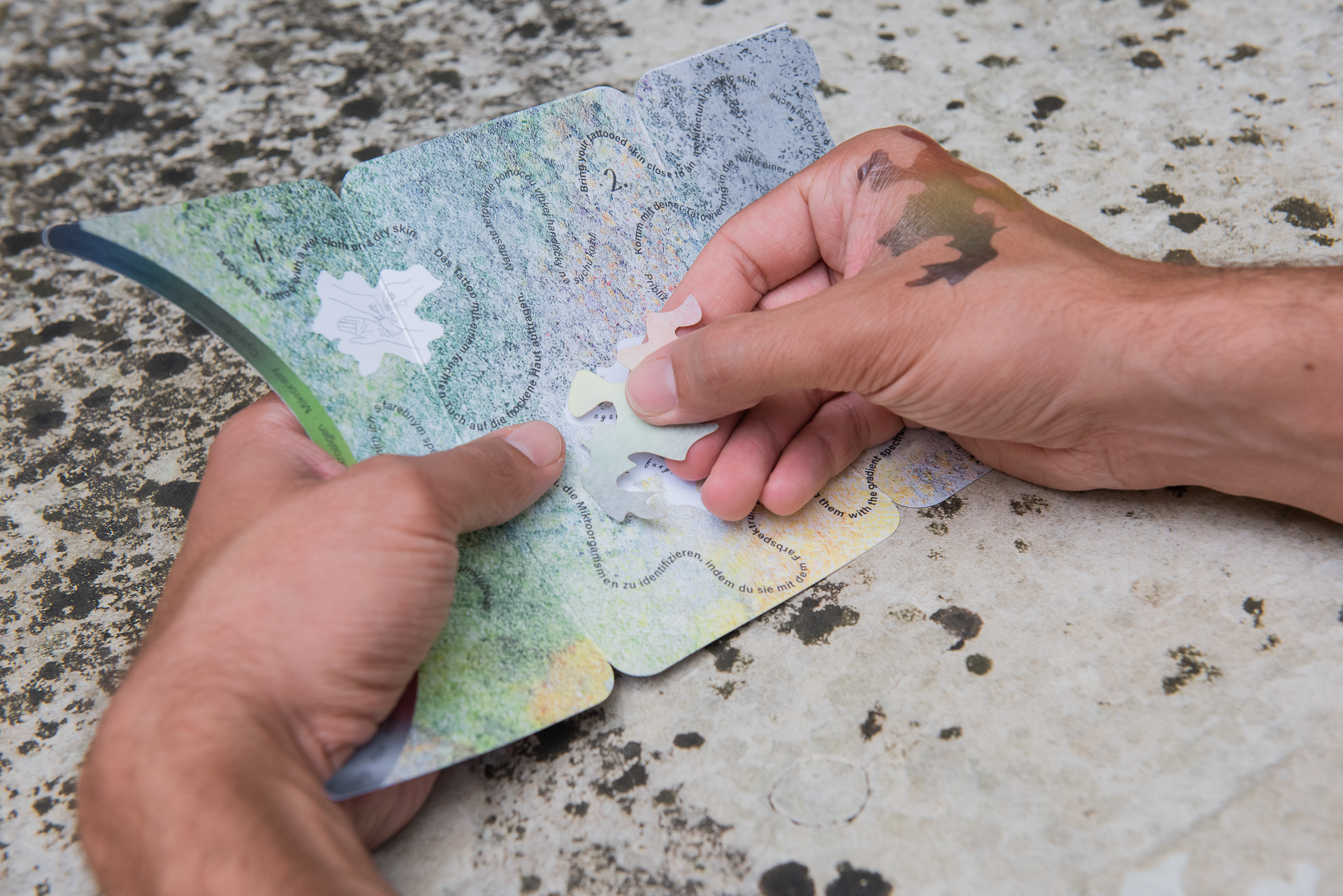
“We chose a textured paper that tangibly mimics the sensations of a freshly plastered façade.”
However, this perfection is shattered by a crack that disrupts the polished exterior supremacy, allowing the suppressed organisms beneath the surface to emerge and grow out of the breach. Upon opening the Kit through the crack, we are confronted with a lively, organic new world that is constantly changing and transforming.

“The aim of the Biopatina Kit is to address the generally promoted disgust towards swarming nonhuman communities, which leads to oppression and their erasure. We need to acknowledge that our world is radically microbial and learn to find beauty in it.”
designed by Adam Hudec and Jakub Wegrzynowicz
photo credits: Joanna Pianka
printed by: Helbich tiskárna
paper: Fedrigony
tattoo: Kresky.sk
supported by SHIFT
photo credits: Joanna Pianka
printed by: Helbich tiskárna
paper: Fedrigony
tattoo: Kresky.sk
supported by SHIFT
